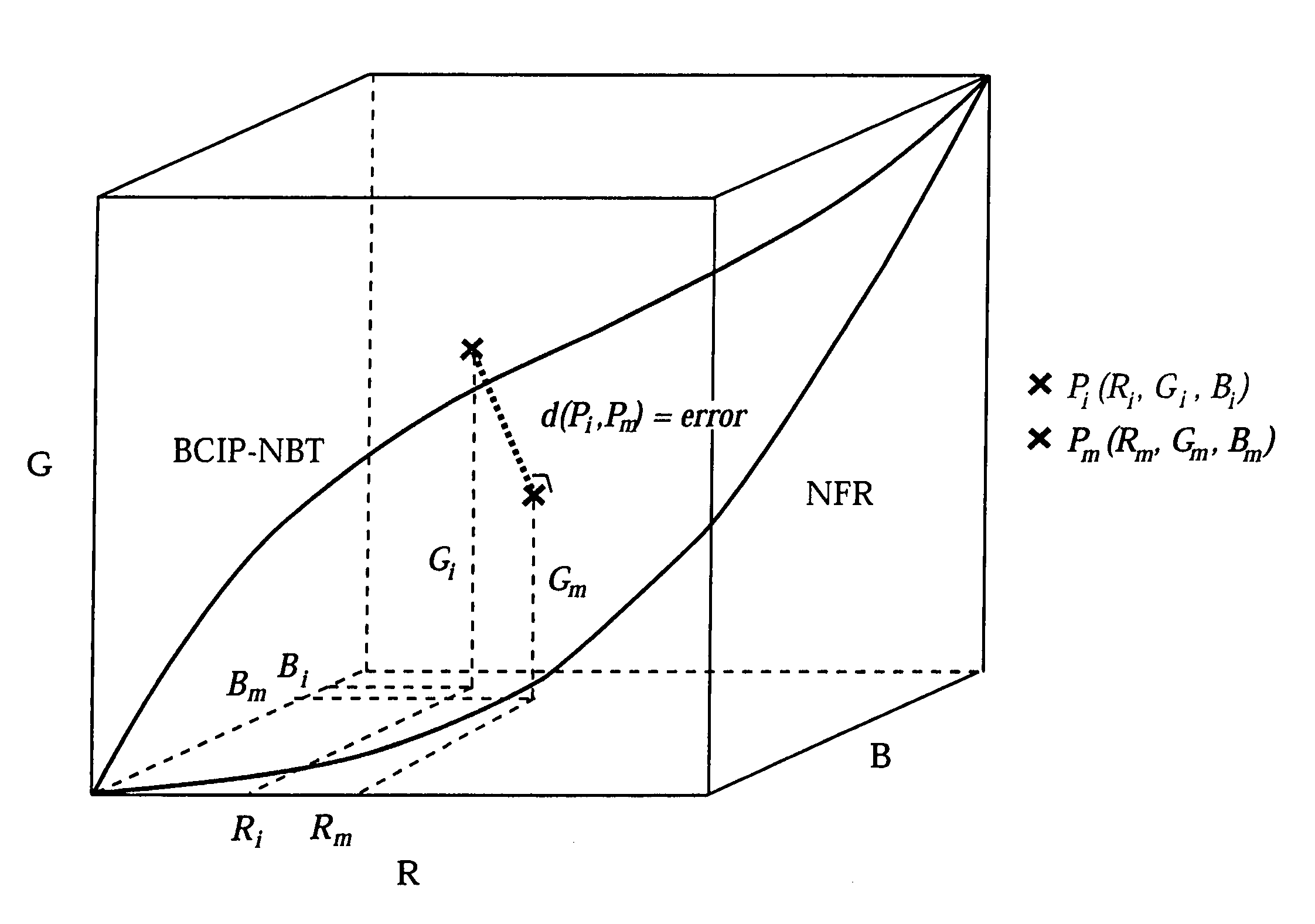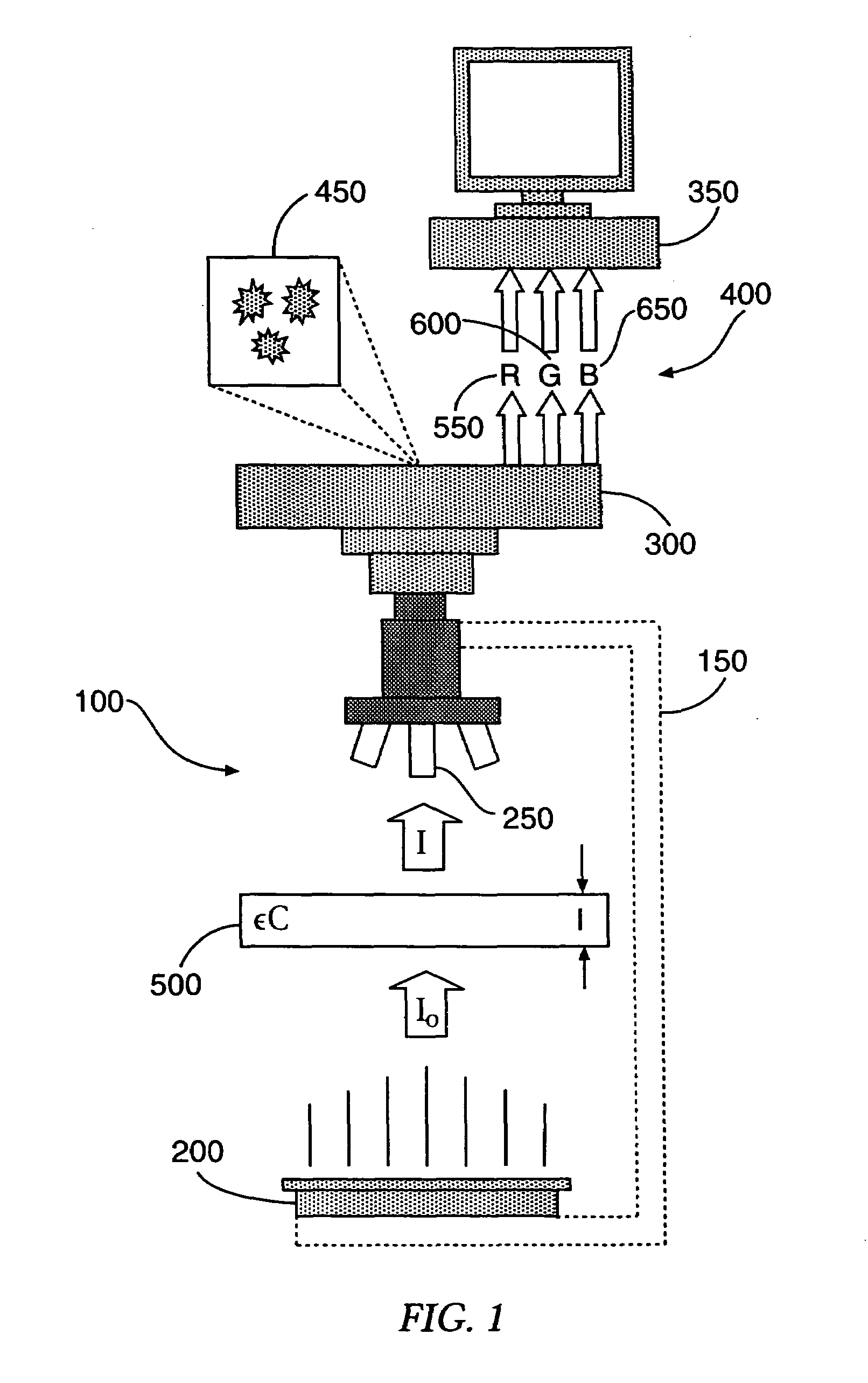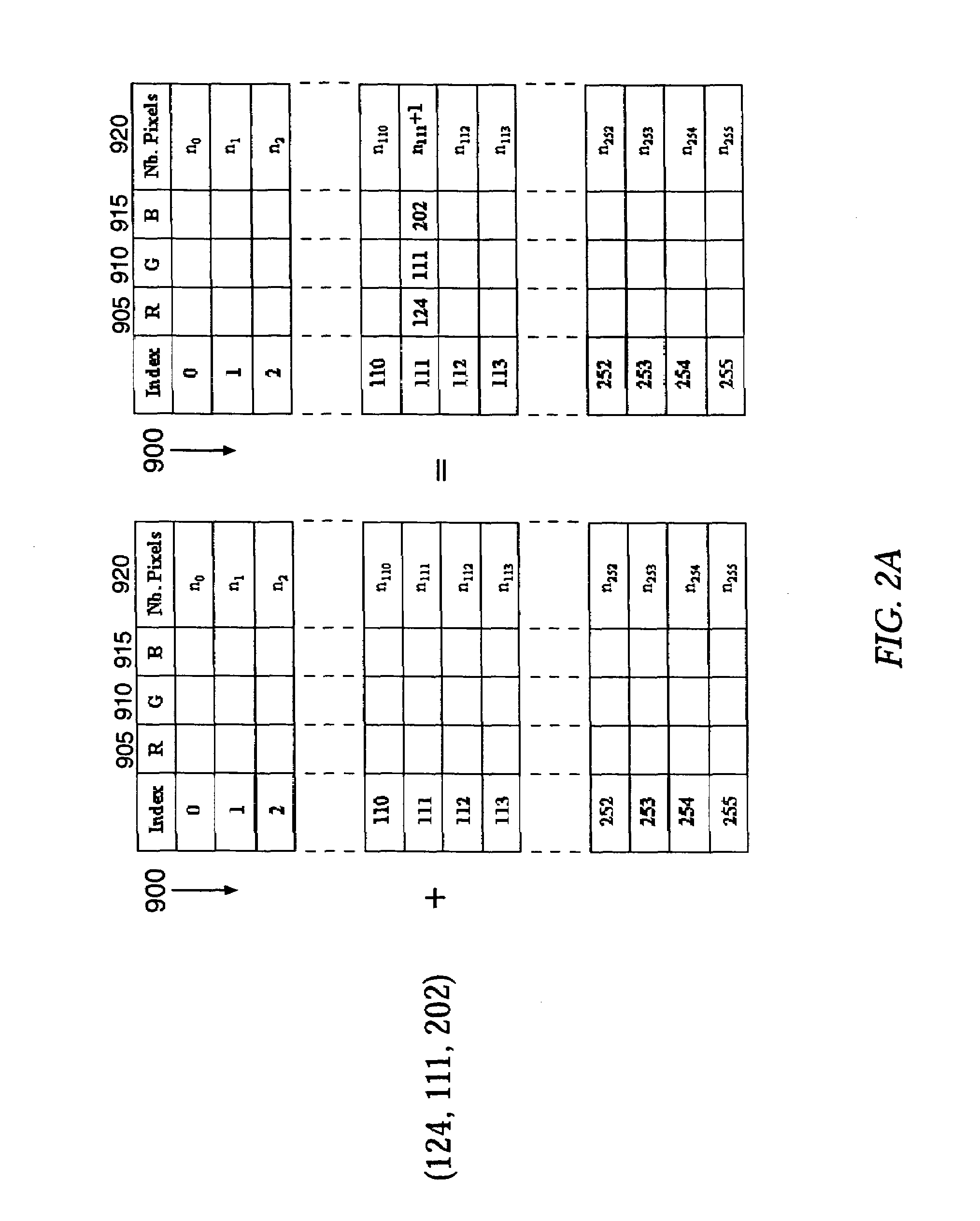Method for quantitative video-microscopy and associated system and computer software program product
a video-microscopy and video-microscopy technology, applied in the field of image analysis, can solve the problems of limiting the maximum number of markers that may be used in a study, affecting the quality of the sample, and the risk of spectral overlap, so as to facilitate real-time processing, facilitate sample viewing, and enhance processing speed
- Summary
- Abstract
- Description
- Claims
- Application Information
AI Technical Summary
Benefits of technology
Problems solved by technology
Method used
Image
Examples
Embodiment Construction
[0049]The present invention now will be described more fully hereinafter with reference to the accompanying drawings, in which preferred embodiments of the invention are shown. This invention may, however, be embodied in many different forms and should not be construed as limited to the embodiments set forth herein; rather, these embodiments are provided so that this disclosure will be thorough and complete, and will fully convey the scope of the invention to those skilled in the art. Like numbers refer to like elements throughout.
[0050]Probably the most rapidly increasing cancer appears to be cutaneous melanoma, for which a new marker has recently been discovered. However, diagnostic and prognostic use requires the precise quantification of the downregulation of this marker in tumor melanocytes. As such, multispectral analysis is one of the most reliable colorimetric methodologies for addressing this quantification in routine bright field microscopy. Accordingly, a technique dedica...
PUM
 Login to View More
Login to View More Abstract
Description
Claims
Application Information
 Login to View More
Login to View More - R&D
- Intellectual Property
- Life Sciences
- Materials
- Tech Scout
- Unparalleled Data Quality
- Higher Quality Content
- 60% Fewer Hallucinations
Browse by: Latest US Patents, China's latest patents, Technical Efficacy Thesaurus, Application Domain, Technology Topic, Popular Technical Reports.
© 2025 PatSnap. All rights reserved.Legal|Privacy policy|Modern Slavery Act Transparency Statement|Sitemap|About US| Contact US: help@patsnap.com



